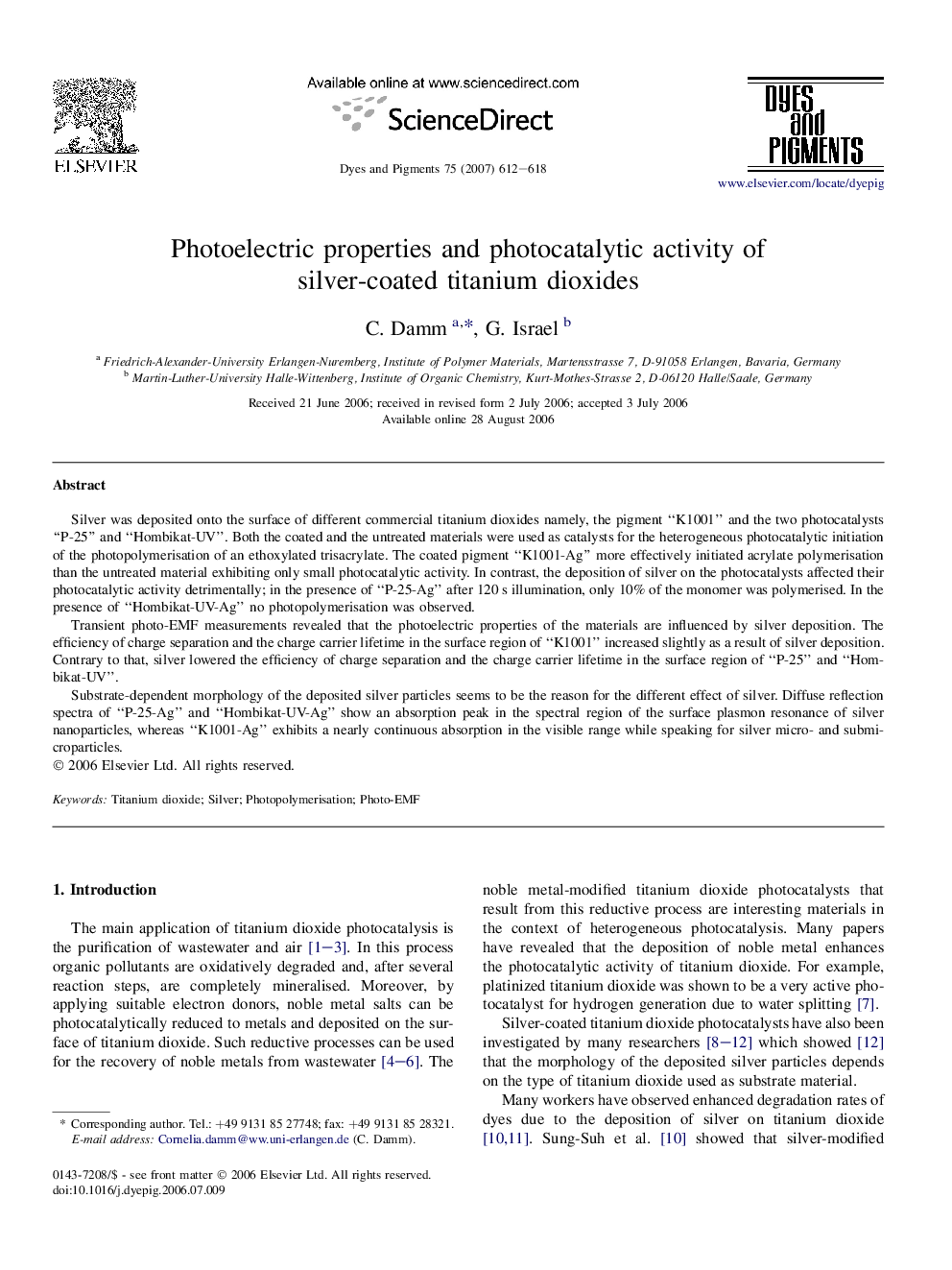| Article ID | Journal | Published Year | Pages | File Type |
|---|---|---|---|---|
| 177873 | Dyes and Pigments | 2007 | 7 Pages |
Silver was deposited onto the surface of different commercial titanium dioxides namely, the pigment “K1001” and the two photocatalysts “P-25” and “Hombikat-UV”. Both the coated and the untreated materials were used as catalysts for the heterogeneous photocatalytic initiation of the photopolymerisation of an ethoxylated trisacrylate. The coated pigment “K1001-Ag” more effectively initiated acrylate polymerisation than the untreated material exhibiting only small photocatalytic activity. In contrast, the deposition of silver on the photocatalysts affected their photocatalytic activity detrimentally; in the presence of “P-25-Ag” after 120 s illumination, only 10% of the monomer was polymerised. In the presence of “Hombikat-UV-Ag” no photopolymerisation was observed.Transient photo-EMF measurements revealed that the photoelectric properties of the materials are influenced by silver deposition. The efficiency of charge separation and the charge carrier lifetime in the surface region of “K1001” increased slightly as a result of silver deposition. Contrary to that, silver lowered the efficiency of charge separation and the charge carrier lifetime in the surface region of “P-25” and “Hombikat-UV”.Substrate-dependent morphology of the deposited silver particles seems to be the reason for the different effect of silver. Diffuse reflection spectra of “P-25-Ag” and “Hombikat-UV-Ag” show an absorption peak in the spectral region of the surface plasmon resonance of silver nanoparticles, whereas “K1001-Ag” exhibits a nearly continuous absorption in the visible range while speaking for silver micro- and submicroparticles.
